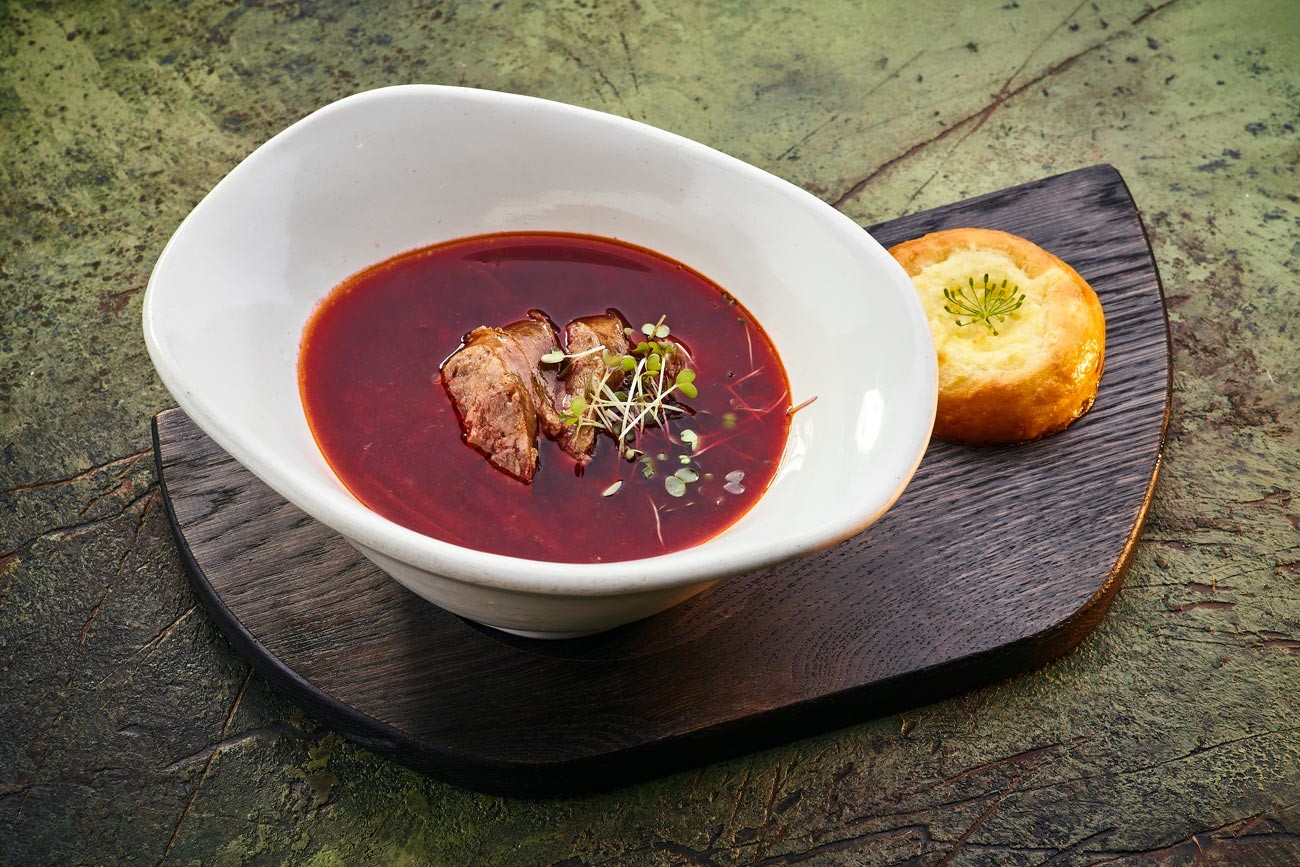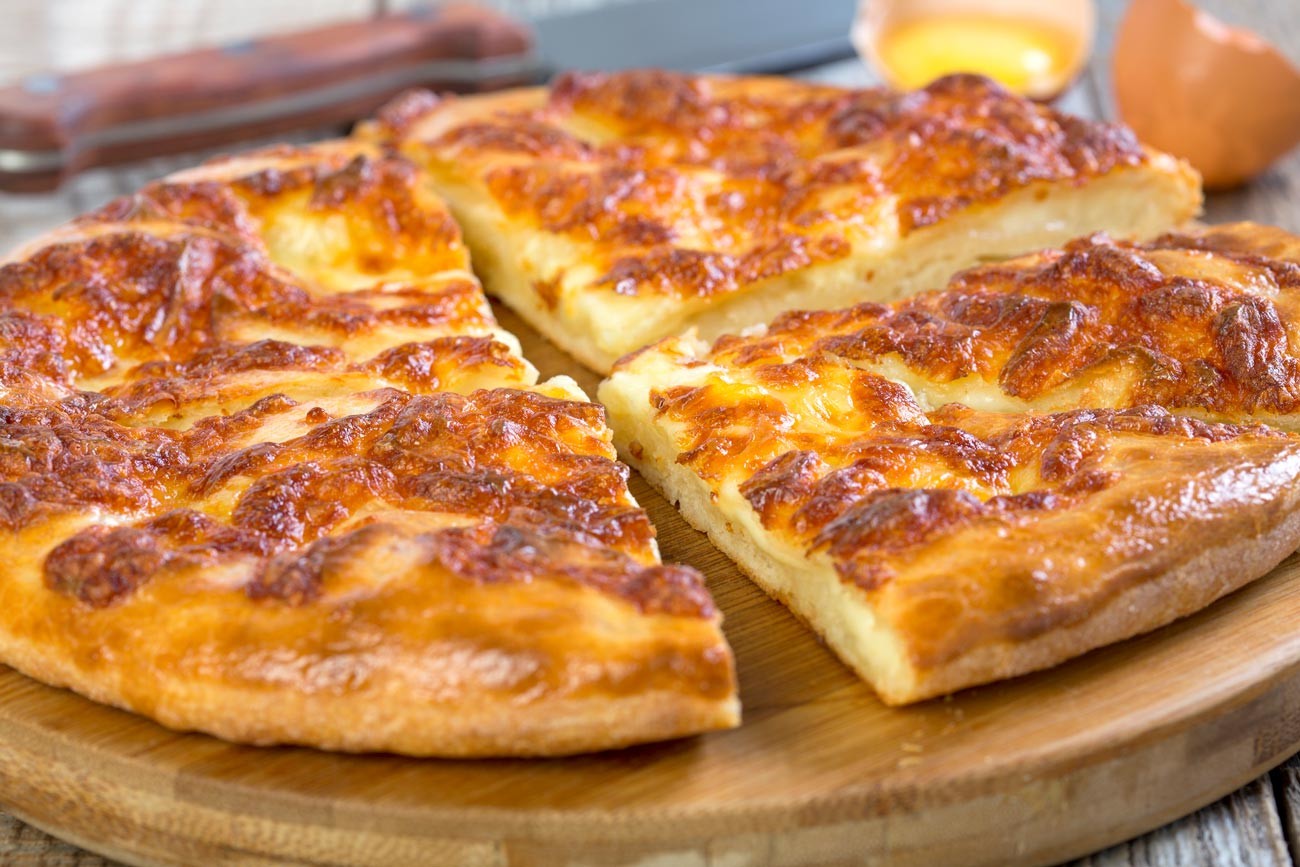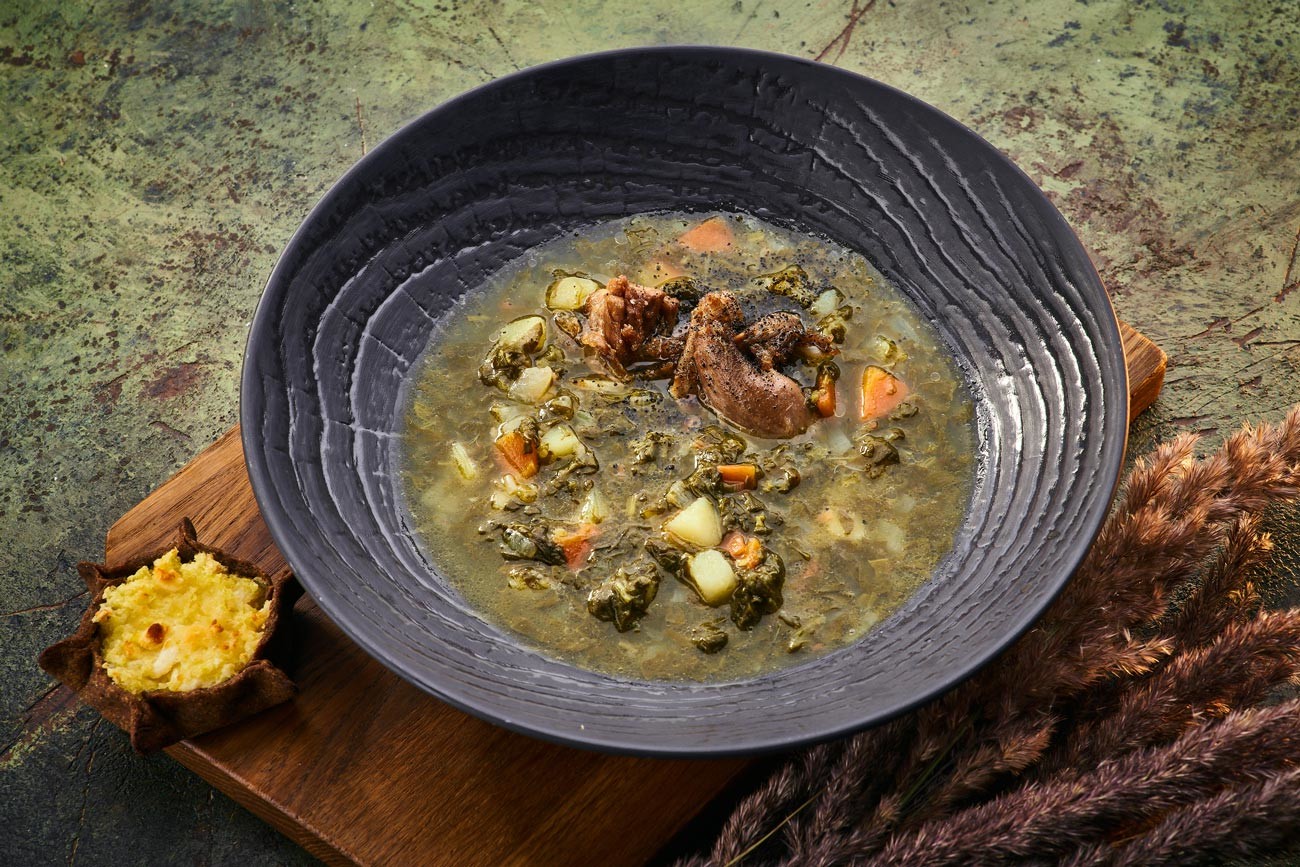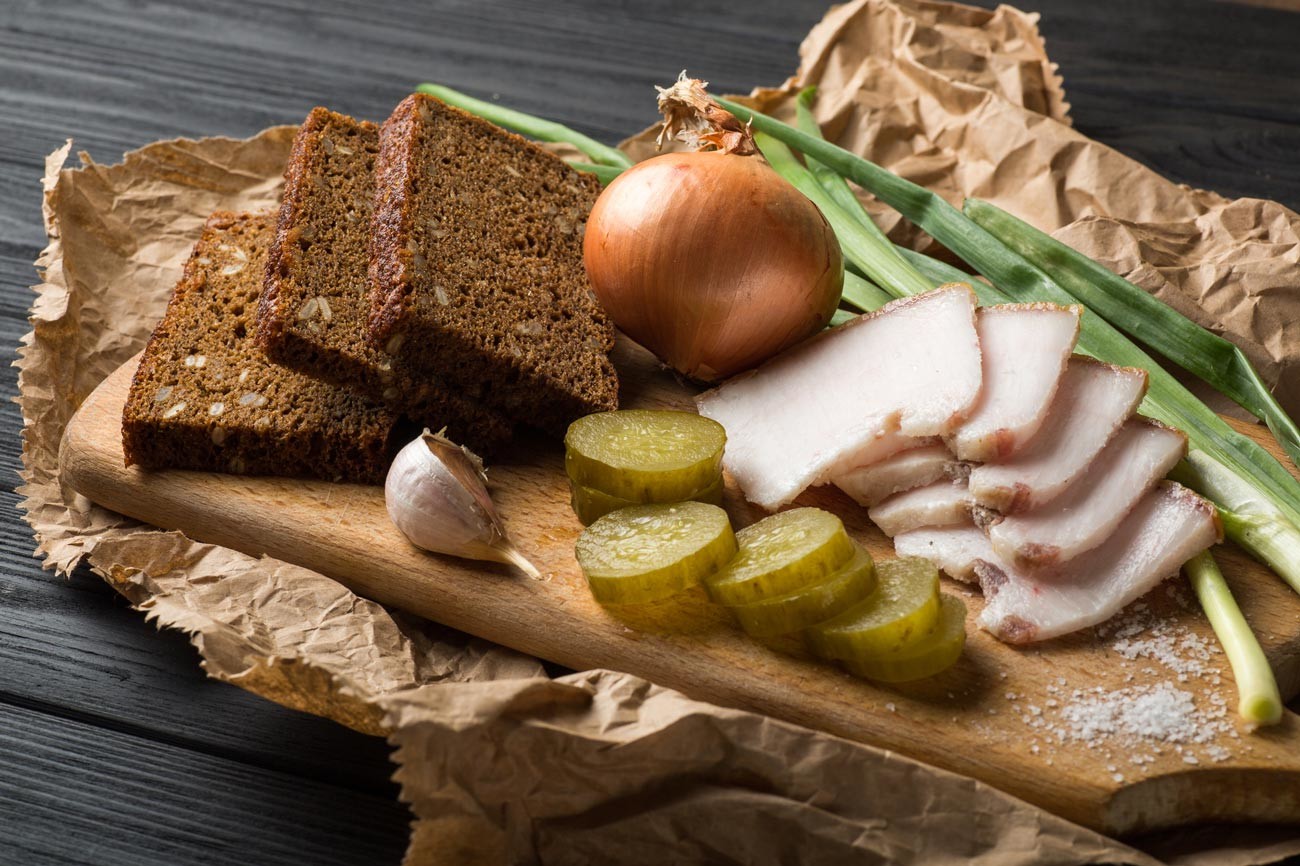Traditional borsch snacks and pastries (RECIPES)

They say the word “borsch” was long used to refer to all soups in Russia. And these were made from the most common products in any given region, which explains why there is such a variety of recipes both for borsch itself and for snacks and pastries to go with it.
1. Moscow borsch with vatrushki
Unlike other regions, Moscow borsch is made using smoked meats. “Real Moscow borsch is cooked in beef stock, but at the same time it must contain several types of meat and different meat delicacies, such as brisket, sausages and smoked meats,” says Vlad Piskunov, head chef at the Matryoshka restaurant. And only in Moscow are vatrushki(quark-filled dough rings) served with borsch. Unlike sweet vatrushki, which are prepared with curd or jam, vatrushkifor borsch are savory and smaller in size.

How to make salted vatrushki with quark: Mix a glass of warm milk, diluted yeast (15 g), eggs (2 pcs), 1.5 tablespoons of sugar and half a teaspoon of baking soda. Add sifted flour (3 cups), beat thoroughly, throw in softened butter (50 g) and a tablespoon of vegetable oil, and continue stirring until the dough stops sticking to your hands. Shape into a ball and leave in a warm place to rise for 40 minutes. Knead and let rise once more. Place the dough on a lightly floured board, roll into a rope shape, cut into small pieces and form balls. Place them on a greased baking sheet 4-5 cm from each other, and leave to rise for a further 15 minutes. Make a hollow in each vatrushka with a glass and fill with quark. For the filling, mix quark (500 g) with eggs (2 pcs), add 1 tablespoon of sugar and 1 tablespoon of salt (unheaped), plus parsley or dill (50 g) and 2 tablespoons of melted butter. Leave to stand for 15 minutes, brush with whipped egg and place in the oven for 20-25 minutes at 180°C.
2. Ukrainian borsch with garlic pampushki
Ukrainian borsch is most commonly made with pork stock and fresh cabbage. This borsch is served with pampushki – small fluffy buns soaked in vegetable oil with added garlic. Pampushki are baked mainly from yeast dough while the borsch is boiling, and served warm.

How to make garlic pampushki: Dissolve yeast (10 g), sugar (1 tsp) and salt (1 tsp) in warm water (250 ml, no hotter than 45°C). Add flour (400 g) and vegetable oil (2 tbsp) and knead. Roll the dough into a ball, cover with a towel and leave to rise for one hour in a warm place. Cut the dough into small pieces and roll into egg-sized balls, place compactly in a dish greased with vegetable oil and leave for another 30 minutes. Grease with egg yolk and place in the oven, preheated to 200°C, for 25 minutes. Add crushed garlic (5 cloves), vegetable oil (2 tbsp) and salt (1 tsp), and beat all together. You can also add greens. Remove the pampushki from the oven and brush immediately with garlic sauce. Cover with a towel and leave for 15 minutes.
How does Russian borsch differ from Ukrainian?
3. Kuban borsch with cheese pie
Genuine Kuban or Krasnodar borsch uses a special variety of beetroot: light pink and striped, imparting a golden-pink color to the soup. Very sour tomatoes and “old” (seasoned) salo (cured pork fat) are also added to Kuban borsch. Best eaten with cheese pie.

How to make cheese pie: Slice cold butter (120 g) into pieces and rub with flour (220 g) into crumbs. Add room temperature milk (50 ml) and stir. If necessary, add more flour, knead the dough and place in the freezer for 15 minutes. For the filling, grate cheese (250 g), mix with eggs (2 pcs), salt (1 teaspoon) and grated garlic (1 clove). Spread the dough along the bottom of a dish, and lay the filling on top. Bake pie in the oven at 200-220°C until the top turns brown.
4. Northern borsch with kalitki
A Russian proverb says: “Borsch without porridge is a widower; porridge without borsch is a widow,” meaning that porridge can be served with borsch instead of bread. Cooks in Karelia make a two-in-one dish: kalitki (small open-faced pastries) with millet. These are rye-based pies prepared with a salty or sweet filling. The optimal filling for borsch is millet porridge.

How to make kalitki with millet: Pour warm milk (100 ml) into a deep bowl, add a little water and salt, and mix well. Pour in sifted flour (rye 200 g, wheat 30 g) and knead. Let the thick dough stand for 15 minutes. Cut the dough into balls, roll into flatbreads 1–1.5 cm thick and lay the millet porridge cooked in milk on top. Pinch the edges and grease the tops with egg. Bake at 200-210°C for 10–15 minutes. Grease the ready kalitki with melted butter.
5. What else to eat with borsch?
Classic borsch snacks include salo, pickles, garlic cloves and spring onions. And you can’t go wrong with Borodinsky rye bread or mushroom or cabbage pie, either. Borsch is often seasoned with smetana for a creamy flavor, and you can also try a shot of vodka.

READ MORE: How to cook borsch in a loaf of Borodinsky bread (RECIPE)
If using any of Russia Beyond's content, partly or in full, always provide an active hyperlink to the original material.
Subscribe
to our newsletter!
Get the week's best stories straight to your inbox